Asteroid Lidar Scans and Soil Sampling: It’s a Dirty Job, But Someone’s Got to Do It
The arrival of soil samples from OSIRIS-REX will provide clues about the origins of the solar system and the potential for life on other planets
The OSIRIS-REx (Origins, Spectral Interpretation, Resource Identification, Security-Regolith Explorer), launched in 2016, was the first U.S. mission to collect a sample from an asteroid and deliver it to Earth. The mission’s key objectives included mapping asteroid 101955 Bennu, comparing observations at the asteroid to ground-based observations, and returning and analyzing a sample of soil from its surface.
Bennu is considered by many scientists to be a kind of “time capsule” from the beginnings of our Solar System. Its surface is very dark and is thought to have undergone extremely little geological change during its lifetime. Scientists believe that beneath its surface lies material that is essentially untouched since the very beginning of our solar system, some 4.6 billion years ago. Bennu was specifically selected by the OSIRIS-REx team due to the availability of carbonaceous material on its surface. This material is a key element in many organic molecules that are necessary for life and is similar to matter that was present in the solar system before the formation of Earth.
The material returned from Bennu is expected to enable scientists to learn more about the formation and evolution of the Solar System, its initial stages of planet formation, and the source of organic materials that led to the formation of life.
Acquiring that material was not going to be easy.
A Good Landing is Hard to Do
The first successful mission to return soil samples was JAXA’s Hayabusa satellite. The mission faced numerous technical challenges, not the least of which was actually landing on its target. The OSIRIS-REx team would take these experiences into account to ensure their mission’s success.
The spacecraft arrived at Bennu in late 2018 and spent more than a year performing multiple flyovers, testing their ability to navigate the asteroid, taking measurements, and thoroughly mapping the surface. These maps helped the team assess which two sites were best suited for sample collection by thoroughly examining the “sampleability,” topography, albedo, and color of each site.
The OSIRIS-REx spacecraft used the OLA (OSIRIS-REx Laser Altimeter), a scanning lidar instrument contributed by the Canadian Space Agency with support from MDA and Teledyne Optech.
The OLA is one of the most advanced lidar instruments ever used for such a mission. Instead of the laser rangefinders used in earlier missions to measure the distance to their targets, OLA uses a rapid scanning mirror and two separate lasers to spread its measurements over the entire asteroid. The long-range laser makes measurements from up to 7 km away as OSIRIS-REx approaches Bennu, while the short-range laser fires up to 10,000 times per second to create detailed maps quickly once OSIRIS-REx is in close orbit.
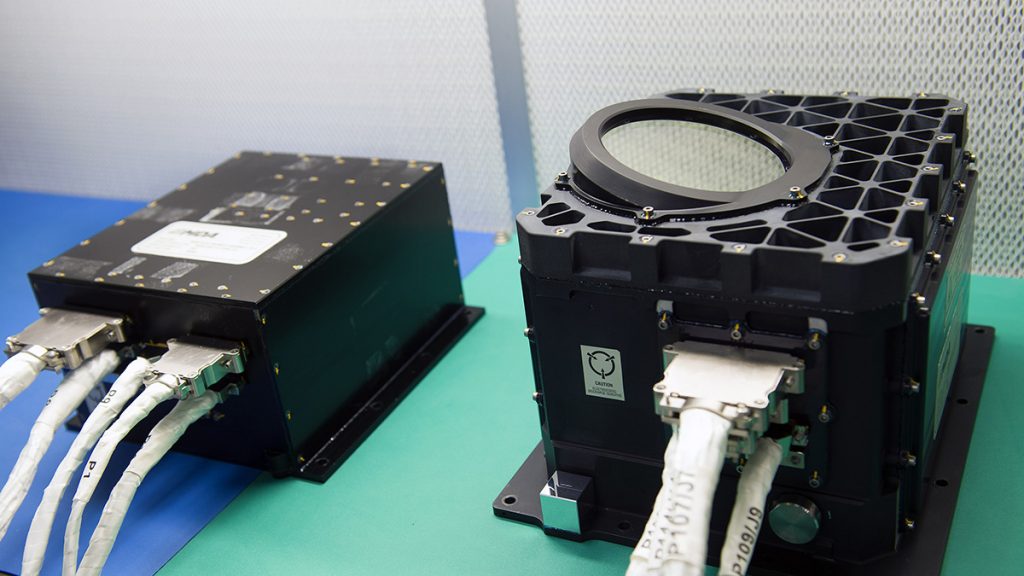
Combined with other imaging systems onboard, the OLA allowed the scientific teams to collect crucial high-resolution topographic data to create a highly accurate 3D model of Bennu’s surface. These 3D maps allowed scientists to understand the context of the asteroid’s geography and the sample location, and plan for the landing process. OLA ranging measurements also worked in tandem with other instruments to support navigation and gravity analyses.
Because sample collection was such a critical event, the mission performed two rehearsals prior to final execution. First the spacecraft practiced leaving its orbit and maneuvering to a pre-defined checkpoint located 410 ft (125 m) above the sample site, and then returning to orbit. Then it practiced taking the spacecraft from orbit through the checkpoint to approaching, but not touching – the sampling location before returning to orbit. During each rehearsal, the spacecraft collected and analyzed tracking data and imagery so that the team could verify the flight system’s performance before the actual sample collection maneuver.
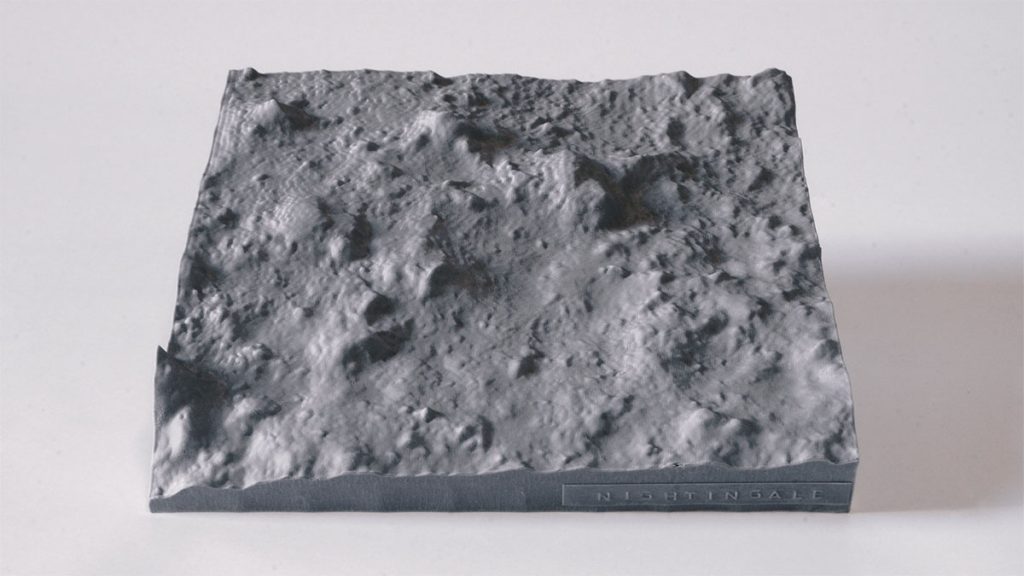
During the sample collection event, OSIRIS-REx used the TAGSAM (Touch-and-Go-Sample-Acquisition-Mechanism) instrument to collect a sample of loose rock from Bennu. TAGSAM is an articulated arm on the spacecraft with a round sampler head at the end. During the Touch-and-Go maneuver (TAG), the sampler head extended toward Bennu, and the momentum of the spacecraft’s slow, downward trajectory pushed it against the asteroid’s surface for about ten seconds—just long enough to obtain a sample. At contact, nitrogen gas was blown onto the surface to roil up dust and small pebbles, which was then captured in the TAGSAM head.
On October 20, 2020, the satellite finally touched down at its destination. One second after contact, OSIRIS-REx injected Bennu with pressurized nitrogen gas, causing an explosion of particles and driving loose material into its sample collector. The used its Touch-And-Go Sample Acquisition Mechanism (TAGSAM) to collect the sample, which involved extending its 11-foot sampling arm and descending towards the surface of Bennu.
Six seconds after contact, while it was still sinking into Bennu, OSIRIS-REx fired its thrusters to begin the back-away maneuver. Nine seconds after contact, thrusters on board OSIRIS-REx halted its descent into Bennu, pushing it away from the asteroid, and blasting loose material from the sample site. The spacecraft’s arm had sunk almost half a meter beneath the surface – far deeper than expected, confirming that Bennu’s surface is incredibly weak. After analyzing data gathered by NASA’s OSIRIS-REx , scientists have learned something astonishing: The surface was much softer than they expected, and the satellite would have sunk into Bennu had it not fired its thrusters to back away immediately after it grabbed dust and rock from the asteroid’s surface.
Just sixteen seconds after contact, the arm fully reemerged from the subsurface. OSIRIS-REx had collected a handful of material and kicked up roughly six tons of loose rock. The collected material was then sealed into a container equipped with a heat shield.
Thirty seconds after contact, it shut off its thrusters and safely drifted away from Bennu.
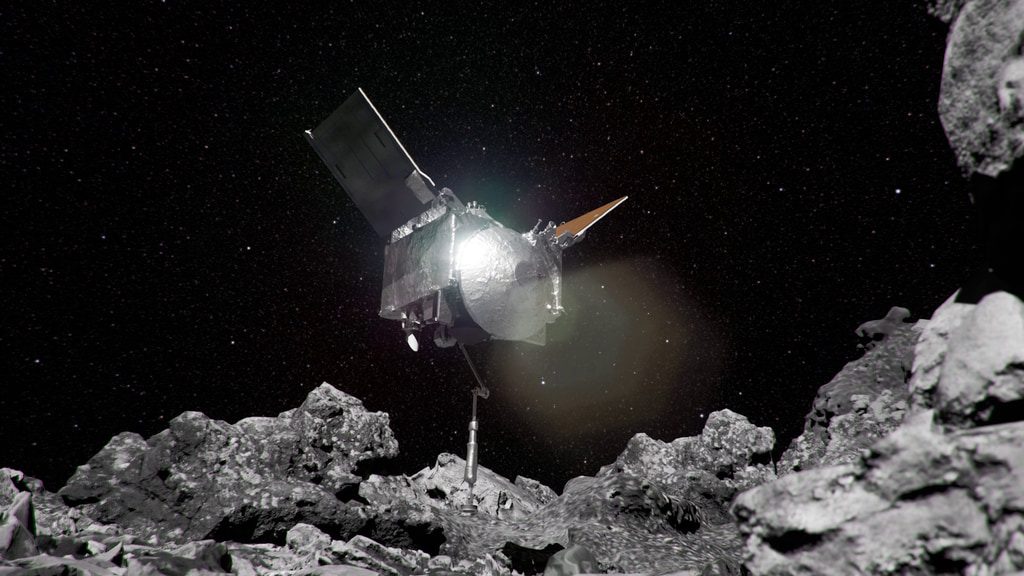
Analysis of the Soil Samples and Future Implications
After seven years in space, the OSIRIS-REx spacecraft returned to Earth on September 24, 2023, with the sample from Bennu.
The OSIRIS-REx mission successfully collected more than 60 grams of soil from Bennu’s surface. The samples were carefully disassembled in specially built clean rooms at NASA’s Johnson Space Center. They showed evidence of high levels of carbon and water, indicating that the asteroid could have been part of the early solar system’s building blocks, and that those blocks included the key ingredients for life.
The data obtained from these samples will also be compared with the data obtained from instruments on board the spacecraft, a process known as “ground-truthing.” The data collected by OSIRIS-REx may also further scientists’ understanding of asteroids as potential threats or resources.
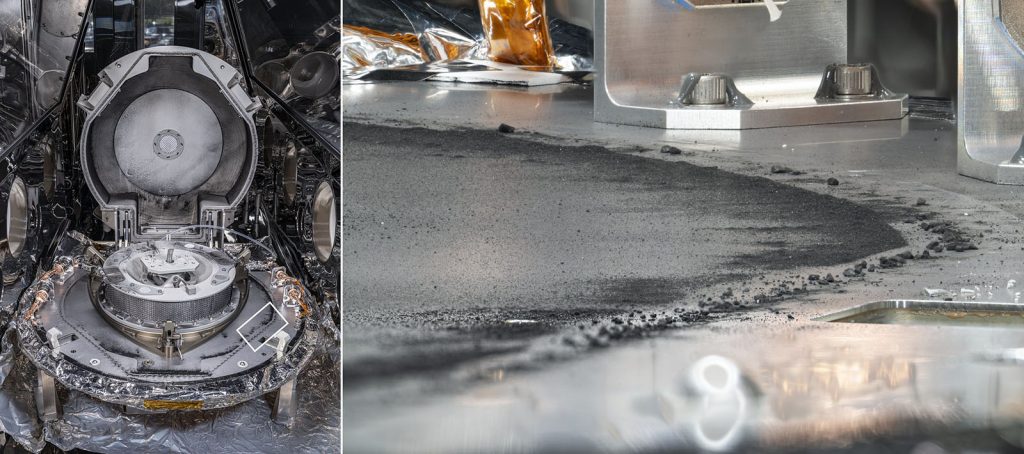
The successful return of the sample marks the completion of OSIRIS-REx’s mission, but the spacecraft continued on to a new mission, OSIRIS-APEX, to explore the asteroid Apophis (once considered a very dangerous threat to Earth), orbiting the sun inside of Venus’ orbit.
The OSIRIS-REx technology is the culmination of many projects and has potential for future applications in space exploration and research. The mission’s success in collecting and returning samples from an asteroid could pave the way for similar missions to other celestial bodies.
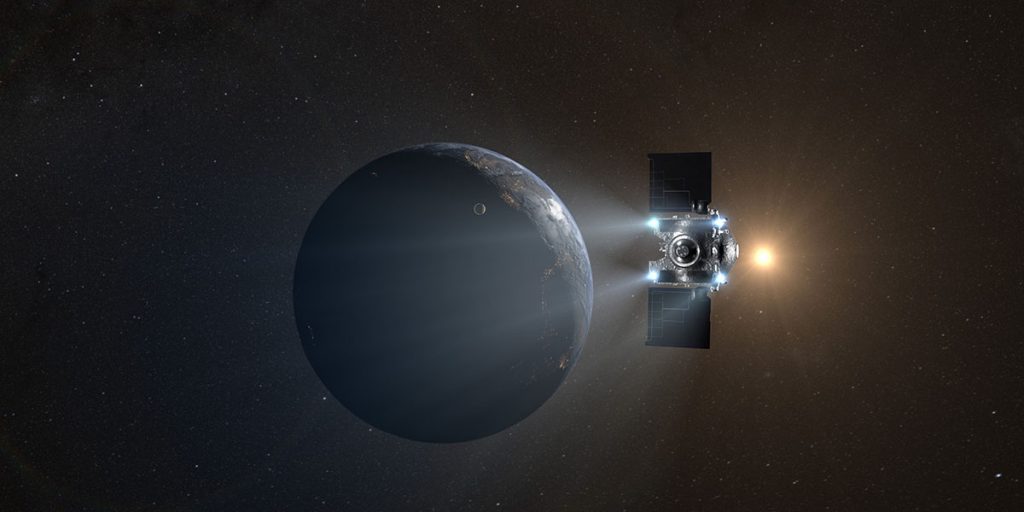
OLA is not the first Teledyne Optech Lidar to travel into space. Teledyne Optech designed the atmospheric Lidar aboard NASA’s Phoenix Mars Lander, which returned a trove of information about Martian weather, including proof that it does, in fact, snow on the red planet. In an application similar to OSIRIS-REx, Teledyne Optech also created the rendezvous Lidar for the U.S. Air Force Research Lab satellite XSS-11, which successfully tracked other satellites in orbit to assess the possibility of satellite docking and servicing.
In addition to the lidar system, the OSIRIS-REx spacecraft is packed with other imagers developed with the help of Teledyne DALSA. Last year, JAXA’s Hayausa2 satellite returned with samples of asteroid Ryugu, which was aided by imagers from Teledyne e2v.
The technology used in the satellite’s heat shield thermal protection system, developed at Ames, could be utilized in future missions requiring the delivery of extraterrestrial material to Earth. Since the OSIRIS-REx spacecraft has already embarked on a new mission, it is demonstrating the reusability of the technology. Additionally, the onboard instruments such as cameras, spectrometers, and the Regolith X-Ray Imaging Spectrometer (REXIS) could be used in future missions for detailed analysis of celestial bodies



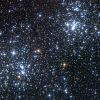 OSIRIS-REx: Asteroid Acquisition
OSIRIS-REx: Asteroid Acquisition 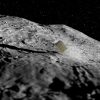 A closer look, very far away: JAXA lands a multispectral imaging robot on asteroid Ryugu
A closer look, very far away: JAXA lands a multispectral imaging robot on asteroid Ryugu 